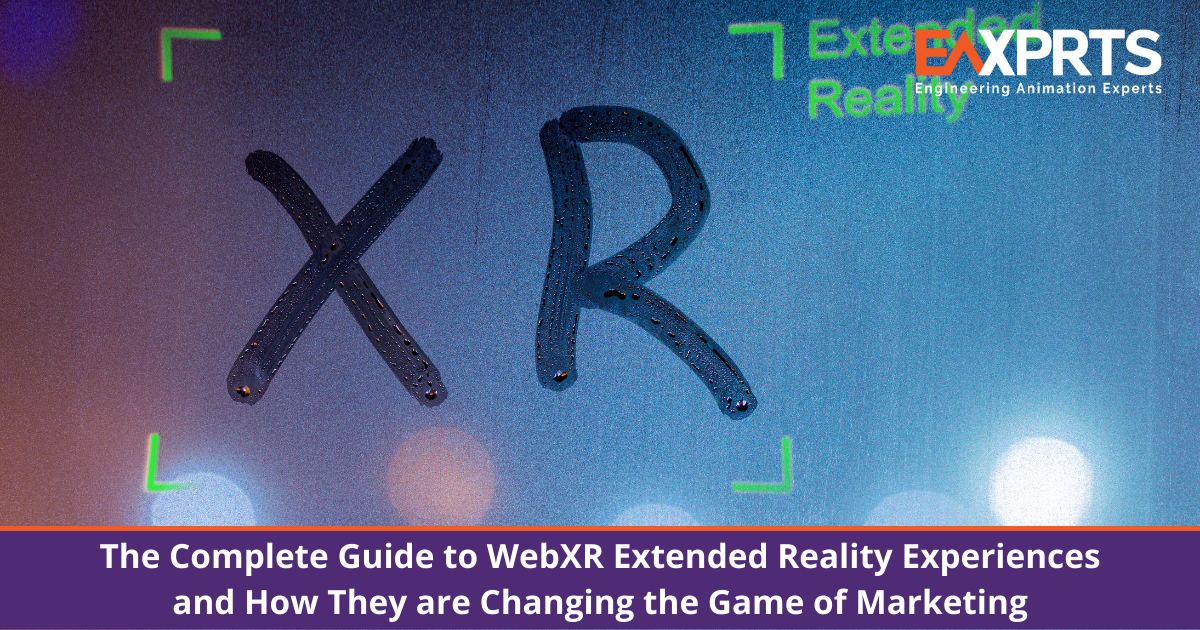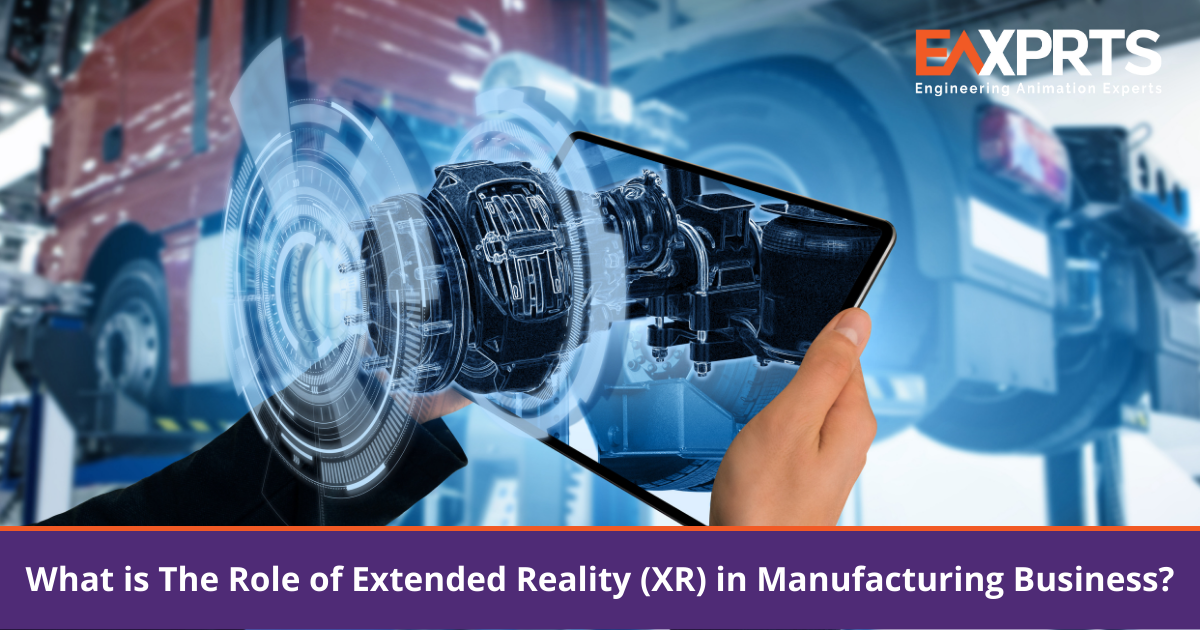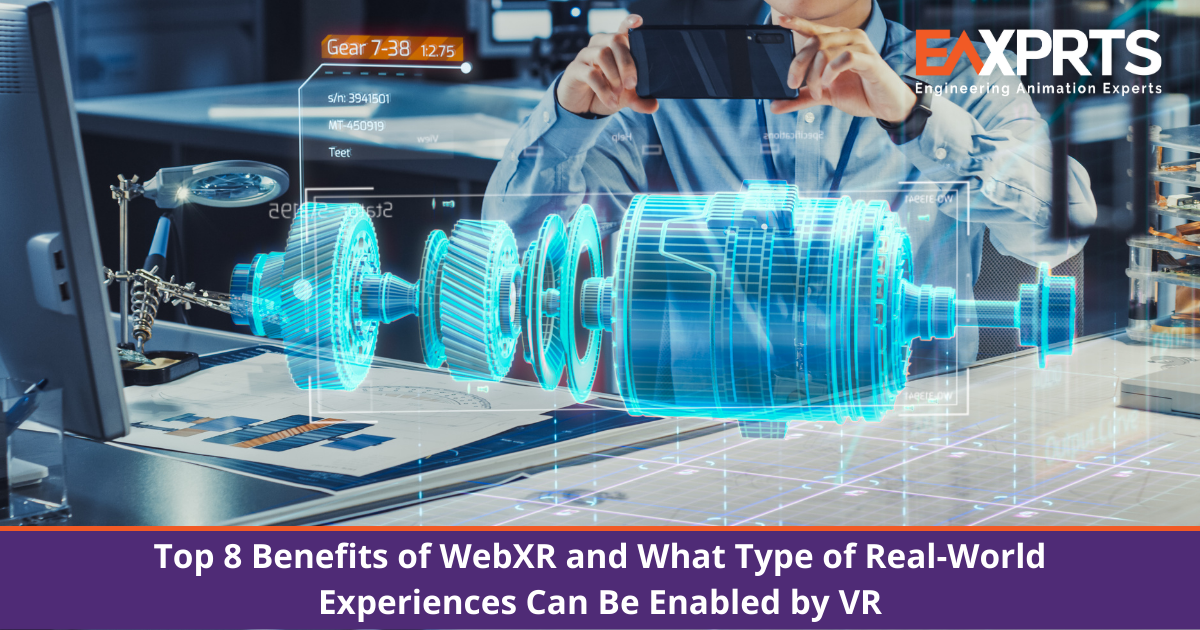
The Complete Guide to WebXR Extended Reality Experiences and How They are Changing the Game of Marketing
May 3, 2023
What is The Role of Extended Reality (XR) in Manufacturing Business?
May 3, 2023Ever since WebXR was introduced in 2018 as the new application programming interface (API) standard, it has been in the news with immersive content creators applauding its potential. WebXR is much simpler for content development in 3D, compared to the WebVR API which it superseded. While WebVR supported only virtual reality, WebXR supports augmented reality as well. Thus WebXR has removed the high entry barrier for web content developers, democratizing it, making it far easier to create immersive experiences for browser-based viewing. In the process, it made app downloads obsolete, since WebXR is not sensitive to any specific operating system.
What is WebXR?
The simple answer is WebXR is a group of standards which are used together to support rendering 3D scenes to hardware designed for presenting all the virtual worlds – VR, AR and MR, and also what will emerge in the future. It is a product of the Immersive Web Community Group, which has contributors from Google, Microsoft, Mozilla, and others.
The reason why WebVR made way for WebXR is due to the restrictive nature of the former. With WebVR, the immersive content could be viewed only on VR headsets. This was proving to be a hindrance for the AR segment which was equally important. By combining all three immersive experiences – Virtual Reality (VR), Augmented Reality (AR), and Mixed Reality (MR) – WebXR offers viewers a choice of devices to view the content – ranging from VR headsets to experience it at the higher end of the spectrum, and the smartphone at the lower end, with AR headsets, smart or AR glasses and other mobile devices like tablets at the intermediate level. What WebXR really does is bring immersive experiences to the masses. The ‘X’ in XR stands for Extended Reality, which embraces anything in the spectrum of immersive experiences – from complete reality (naked eye) to completely immersive (VR), with various levels in between (AR/MR).
How Will WebXR Change the World?
It is not only the devices which were made irrelevant by WebXR for the masses that can now experience immersive content without any special devices. WebXR has also bridged the gap for developers who can now script content for both VR and AR. For example web developers who are good in JavaScript can now easily create content for VR, AR or MR technologies, without worrying about the devices that can access it. For example, the promoters of Scapic have developed a design tool that allows anyone to create professional quality AR and VR experiences, without 3D expertise and without code. So WebXR is a great leveler of immersive content development, and by extension, has opened the field for commercial and industrial applications. It has the potential to cause disruption of the existing order, which is digital communication mostly with various levels of 3D animation, replacing it with immersive experience at different levels of engagement from basic to advanced, from AR to VR with equal ease. The early adopters are already off the ground, especially in the fields of marketing, e-commerce and advertising.
The Potential for WebXR
WebXR is eminently suitable for business applications like design and development, prototype testing, product presentation, practical demonstrations, training and maintenance procedures. Facebook, for example, launched WebXR on its portal to encourage developers to share their content, opening many avenues to them. While e-commerce platforms – furniture, gifts, gadgets, apparel, cosmetics and other stuff – are among the early adopters of WebXR for their marketing campaigns, industry is not too far behind. The automotive industry, for example, is using WebXR to simulate different scenarios in order to study the problems in models under development and make changes to digital prototypes before actually creating a physical model. Similarly, applications in other industries – discrete manufacturing and process industries – are also growing with companies preferring to design and perfect their products, plants and assembly lines virtually before starting work on building them physically. The same is true of healthcare, building & architecture, education and many other sectors. As the use of digital twins grows, WebXR, which is still evolving, will be adopted to more and more industrial applications, in conjunction with other digital trends like artificial intelligence and machine learning.
Benefits of WebXR
WebXR has become popular is a relatively short period thanks to its many features and benefits, which are listed below:
- WebXR enables immersive VR and AR experiences within the browser, so that 3D interactive items can be rendered on regular websites.
- WebXR content can be viewed on devices that people already have on hand instead of the need for expensive hardware, but also supports expensive devices.
- For consumers, WebXR opens an entire new way of experiencing products and checking them out virtually, before making any decisions.
- For manufacturers and service providers WebXR is a wonderful marketing tool to display products and wares at great detail, allow consumers to try on the apparel or cosmetics, place furniture at various locations in their homes, all virtually without visiting the shops.
- Supply chains are already using AR/VR for activities like order picking in warehousing; predictive modeling for the internal supply chain loop; and secure and efficient delivery. With WebXR, the entire operational structure of the supply chain can become visible.
- WebXR is a great learning aide and teaching tool and not just for the education sector – almost every industry is now using WebXR for training staff as well as educating its suppliers.
- A major benefit of WebXR is for the industrial maintenance sector – manufacturing operations, power plants, oil & gas, refineries, mines, etc., can train and guide their maintenance staff for routine repairs and troubleshooting with expert guidance by remote.
- The best for the last – WebXR is economical in implementation and has the potential to save money with effective use of this technology in each of the areas mentioned above.
Limitations of WebXR
Every technology, whatever the benefits, also has some limitations and WebXR is no exception. Here are a few drawbacks:
- WebXR is still incompatible with most major browsers and has significant performance limitations, so native AR/VR devices still have an edge. However, the issue of cross-platform compatibility is being addressed.
- Another problem area is the dissatisfactory performance and the high latency of web applications in general, because of issues with modern JavaScript and Just-In-Time compilation, which results in compatibility issues that can also cause discomfort to users.
- In general, AR needs higher bandwidth in comparison with VR, which again impacts the performance of WebXR.
- The WebXR API not being a rendering engine, cannot load models, wrap them in textures, and paint them to pixels, etc., but instead relies on WebGL or other similar APIs for rasterization.
- Finally, any web environment brings in issues related to cybersecurity, thanks to the need for direct communication between devices and communication networks.
Conclusion
These are early days for WebXR as the technology is still evolving. Yet it has created enough buzz to get enterprises excited about the opportunities it opens to them as seen in the many benefits. The simplicity in terms of access and hardware requirements makes it more appealing than standalone VR technology and the access by smartphone democratizes it like no other. However, there are some shortcomings. Also, when applied to business, companies have to be wary about the wrong kind of content and may well be advised to seek expert help from professionals.
Talk to us today! Reach us on sales@eaxprts.com



